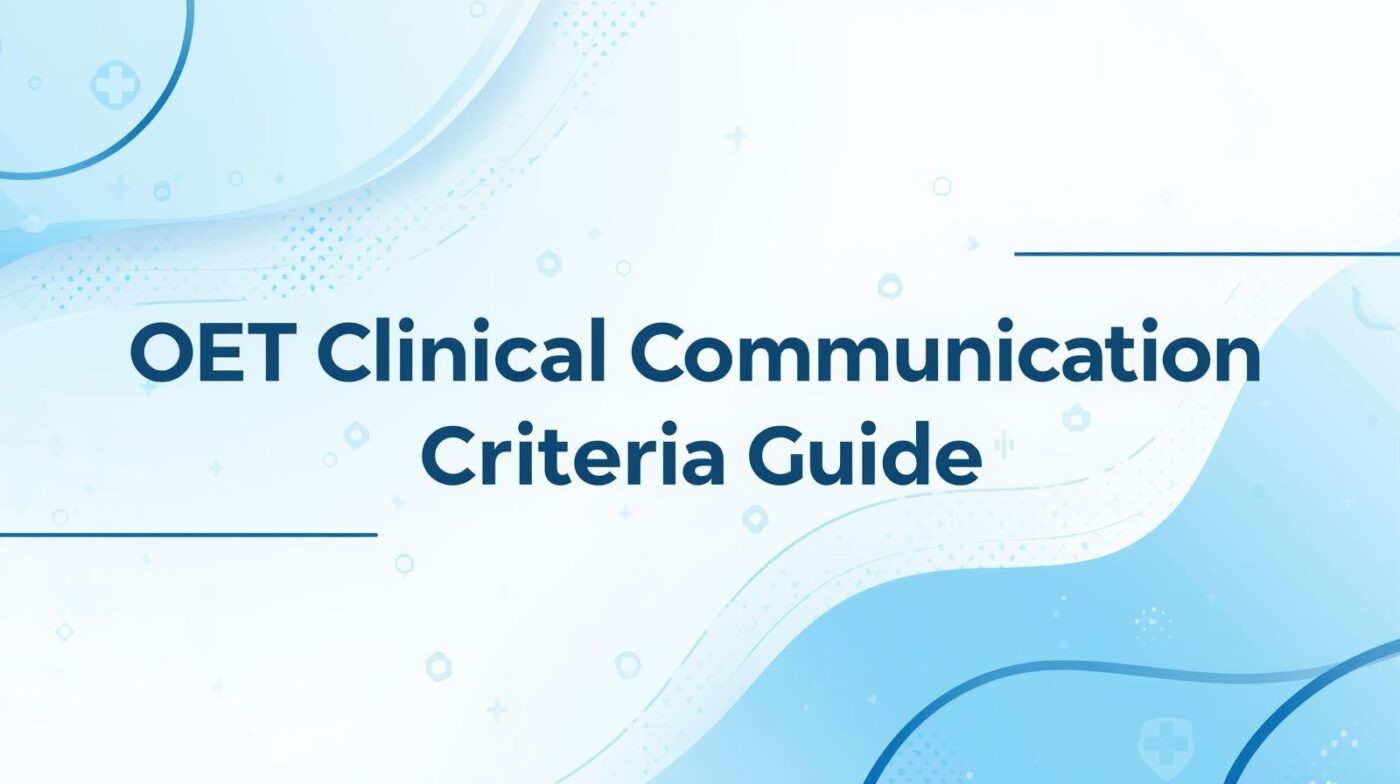OET Strategies, Speaking
OET Clinical Communication Criteria Made Simple
In continuation from the previous article, this time we’ll focus on practical strategies for raising your score in the OET Speaking sub-test under the Clinical Communication Criteria.
Previous article:
Clinical Communication Criteria (Basic Strategies)
Let’s begin with a quick review of the five assessment areas:

Reference: Speaking sub-test: Assessment criteria and level descriptors
- Relationship Building
- Understanding & Incorporating the Patient’s Perspective
- Providing Structure
- Information Gathering
- Information Giving
Unlike clinical practice where accurate diagnosis is the ultimate goal, in the OET Speaking test what examiners want to see is more of a counseling-style approach—a respectful, empathetic, and patient-centered communication style.
Do You Need to Complete Every Task?
When you look at the criteria, you’ll notice that task completion itself is not part of the scoring system. Tasks are there as prompts to guide your role play, but you don’t need to cover every single point.
That said, most tasks naturally connect to one of the criteria, so they are never “useless.” If you come across a phrase or idea that feels too difficult to express in the moment, it’s perfectly fine to skip or reframe it in a different way.
Structuring the Role Play
Based on the criteria, a logical flow for your role play might look like this:
- Polite greeting
- (Patient shares symptoms, often emotionally)
- History taking / information gathering
- Explaining diagnosis and/or treatment
- Checking patient’s understanding
Relationship Building is especially important at the beginning. Starting too abruptly with something like “How can I help you?” may lower your score. Instead, aim for a warm, professional introduction that reassures the patient.
The Information Gathering phase should not be skipped. Even if the task card does not specify it, asking a few clarifying questions about the patient’s symptoms avoids the impression that you are rushing into a diagnosis based only on the patient’s initial description.
After history taking, you can move into diagnosis and explanation, usually by working through the items listed on the task card in order.
The Flow Before Diagnosis Is Fairly Fixed
While role play scenarios may differ (first consultation, follow-up, or re-examination), the early sequence of greeting and information gathering remains largely the same. This means that memorizing a few reliable phrases and patterns allows you to maintain smooth communication across different cases.
1. Polite Greeting
The start of the consultation should build trust by taking a small detour before moving directly into medical questions. Keep it short (10–20 seconds is enough), so you don’t run out of time later.
For example:
- Hello, my name is Dr. [Name]. Could I confirm your name, please?
- Hi [Patient’s name], how are you feeling today?
Depending on the situation, you can also add:
- Please feel free to stop me if anything isn’t clear.
- Before we start, do let me know if you have any questions, okay?
If you spend extra time at the beginning, balance it out later with quick comprehension checks such as:
- Does that make sense to you?
- Are you following so far?
In the exam, it’s easy to focus too much on explaining. But remember: OET Speaking rewards clear, supportive communication rather than speed or content density.
Repetition will help. If you practice using the same expressions across role plays, they will eventually come out naturally without conscious effort. At times, deliberately slow down your pace to maintain a calm rhythm that helps both you and the patient.
I’ll cover expressions for the history-taking phase and beyond in the next article.
If you’re preparing for OET, consider exploring our practice resources at OET Bank. We’re designed not just as mock tests, but as powerful review tools that make it easier to analyze weaknesses and focus on what’s needed to pass.


